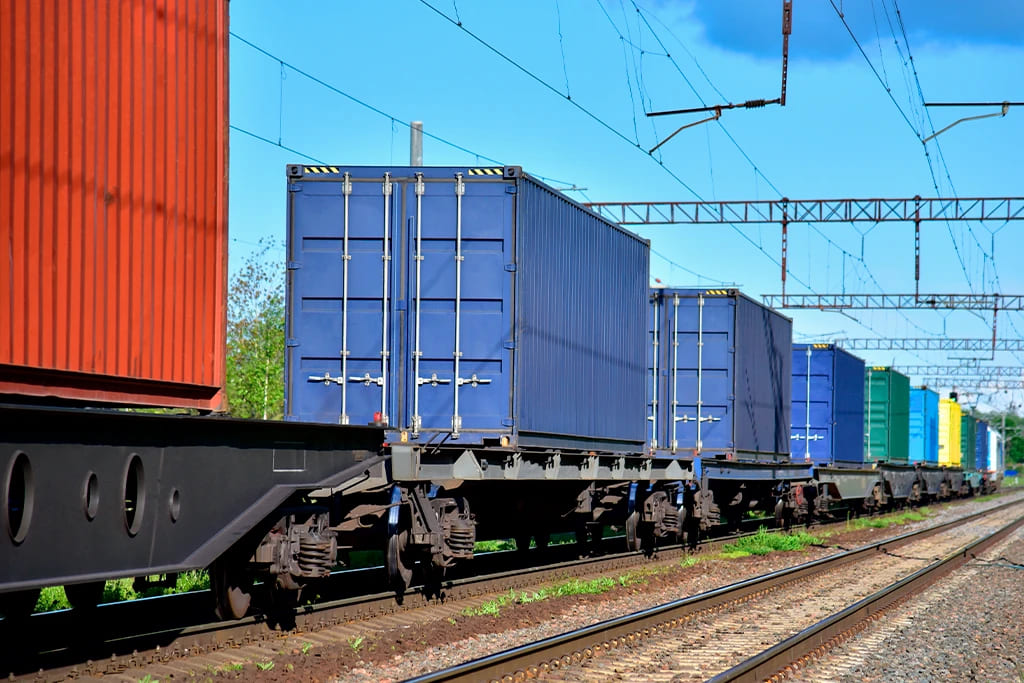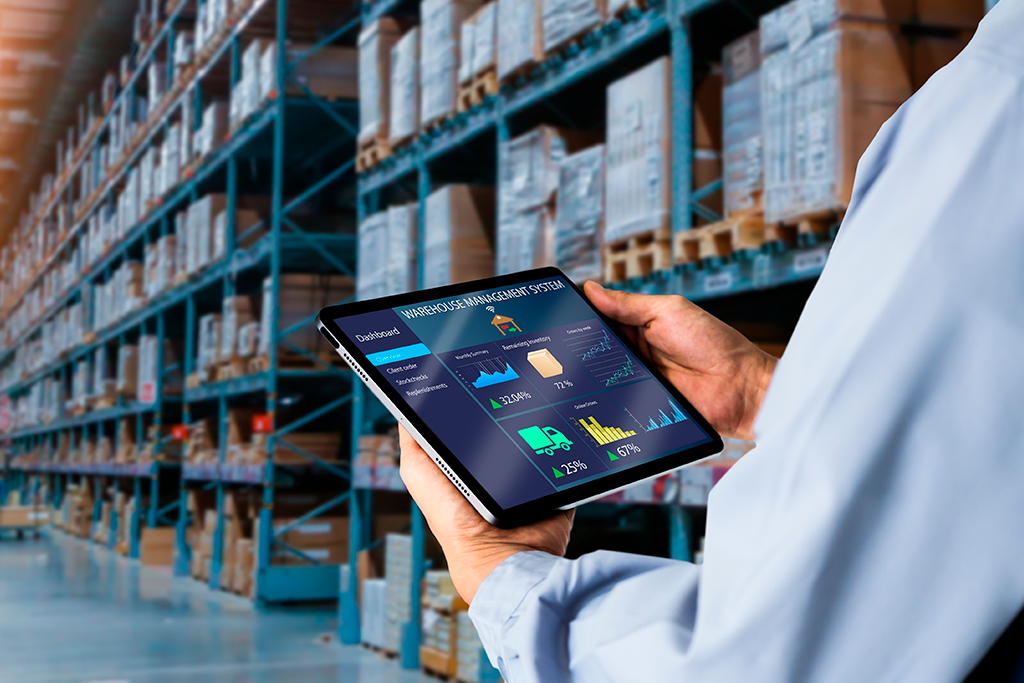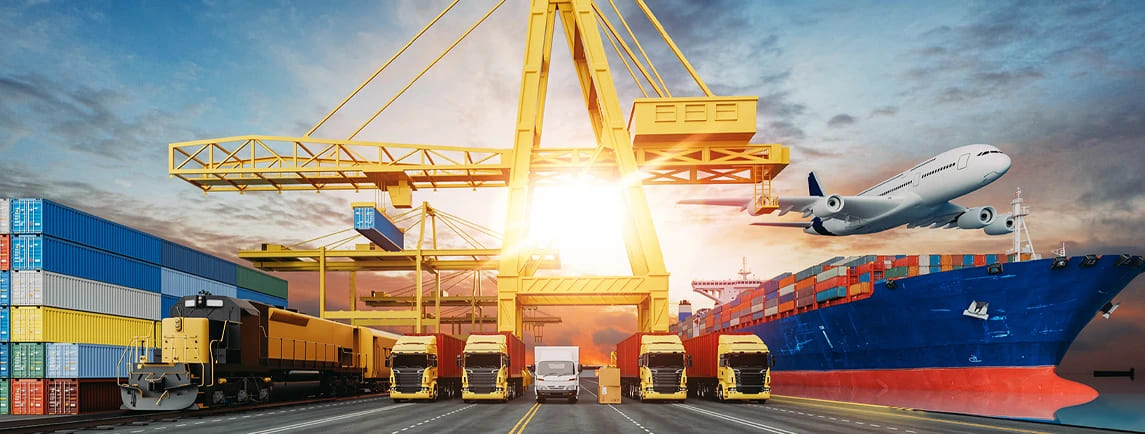10 Advantages of Intermodal Transportation for Business
Intermodal transport is a logistics strategy combining multiple modes of transport—trucks, trains, ships, and occasionally aircraft—using standardized containers, which can be up to 40 feet long. These containers are designed for easy transfer between different modes of transportation, eliminating the need for repeated loading and unloading of goods. This standardization is key to the seamless integration of various transportation modes.
The Role of Road Transport in Intermodal Logistics
Road transport plays a critical role in intermodal logistics by providing the flexibility and first-mile/last-mile connectivity that other modes cannot. While rail and sea offer cost-effective solutions for long-distance shipping, trucks are indispensable for bridging the gaps between terminals, distribution centers, and final destinations. The strength of intermodal transport lies in its ability to combine these modes effectively.
1. Cost Efficiency

- One of the most compelling advantages of intermodal transportation is its remarkable cost efficiency, particularly for long-distance shipments. This cost-effectiveness is a key factor driving the rapid growth of the intermodal freight market, which is projected to expand from $55.3 billion in 2022 to an impressive $197.59 billion by 2032.
- Intermodal transport can save substantial costs, especially for long-distance shipments. For distances over 500 miles, cost reductions can reach up to 40%.
2. Environmental Sustainability and Corporate Responsibility
- Another primary advantage of intermodal transport is its superior fuel efficiency. By strategically combining different modes of transportation, companies can optimize their fuel usage and lower carbon emissions. It is particularly evident when comparing intermodal solutions to traditional single-mode transport methods.
- Intermodal shipping reduces carbon emissions by as much as 75% compared to road-only transport. This supports a greener supply chain.
- Reducing fuel usage and emissions positions businesses as eco-conscious leaders. Companies adopting intermodal strategies often enhance their brand reputation among environmentally conscious customers.
- However, road transport remains essential for short-haul deliveries and efficient door-to-door service.
3. Enhanced Security and Safety
- Sealed and monitored containers ensure cargo safety throughout the journey, reducing theft and damage risks.
- Intermodal transport reports 30% fewer theft incidents than road-only transport.
The safety advantages of intermodal transportation include:
- Continuous seal integrity throughout the journey.
- Minimized handling, reducing the risk of damage.
- Enhanced tracking and monitoring capabilities.
- Professional management of cargo security by experienced logistics partners.
- Professional 3PL partners are crucial in maintaining these high-security standards. They ensure that freight logistics are always managed professionally and with the highest standards in cargo security in mind. This commitment to security, combined with the inherent safety features of intermodal transport, makes it an ideal choice for businesses looking to protect their valuable shipments while benefiting from efficient and flexible logistics solutions.
4. Reliability
- Intermodal solutions provide reliability and scalable capacity, particularly on high-demand routes, ensuring goods are shipped even during peak seasons. This reliability prevents supply chain disruptions as it offers better schedule adherence. Rail and sea transport are less affected by traffic or weather-related delays, ensuring consistent delivery times.
- Intermodal solutions offer a more stable and reliable alternative than single-mode options that may face capacity constraints during peak seasons or unexpected disruptions. Intermodal transportation has become a dependable choice for transporting goods. The enhanced service levels of intermodal transport are evident when compared to traditional single-mode options. Key advantages include:
- Greater flexibility in routing and scheduling.
- Reduced transit times through optimized mode combinations.
- Improved tracking and visibility across the entire journey.
- Enhanced ability to handle fluctuations in demand.
5. Reduced Road Congestion

- Shifting freight to rail or sea reduces highway traffic as a single intermodal train can replace up to 280 trucks, easing road congestion and improving transit times.
- Intermodal transport offers efficient route optimization. Multimodal transport can adapt and respond to traffic congestion by implementing an efficient route optimization that doesn’t rely on a single mode of transportation. This flexibility allows businesses to maintain smooth operations even in the face of unexpected delays.
6. Operational Flexibility and Adaptability
- Intermodal transport adapts to diverse shipping needs, offering tailored solutions for manufacturing and retail industries. This flexibility optimizes delivery strategies for specific business goals.
- Intermodal transportation allows businesses to adapt their shipping strategies to ever-changing market conditions. This enhanced flexibility is a significant factor contributing to the projected growth of the intermodal freight transportation market to $197.59 billion by 2032.
- With intermodal transport, companies can accommodate various freight sizes and types. This versatility allows companies to efficiently manage shipments ranging from small parcels to large, containerized goods, all within the same logistical framework.
The flexibility of intermodal transport is further enhanced by customized routing options, which offer several benefits:
- Optimized transit times.
- Reduced costs through efficient route planning.
- Ability to bypass congestion points.
- Seamless integration of multiple transport modes.
7. Streamlined Customs Processes and Increased Transit Times
- Intermodal transport simplifies customs clearance, reducing paperwork and delays. This efficiency accelerates cross-border transactions by up to 20%.
- Intermodal solutions contribute to faster transit times through:
- The ability to switch between transportation modes to avoid congestion.
- Utilizing faster modes (e.g., air freight) for time-sensitive shipments.
- Optimizing routes based on real-time traffic and weather conditions.
8. Technological Advancements and Innovations

- Significant technological advancements in intermodal transportation enhance transportation through sophisticated tracking and management systems. These systems provide real-time visibility of shipments across various modes of transport.
- Better coordination and decision-making. ensure that businesses stay adaptable and efficient when using intermodal transportation.
- Innovations improving efficiency and reducing costs in intermodal transport include:
- Advanced container designs that maximize cargo space and facilitate easy transfers between modes.
- Automated handling systems at intermodal terminals, reducing transfer times and labor costs.
- Predictive analytics for optimizing routes and mode selection.
- Internet of Things (IoT) devices for monitoring cargo conditions in real-time.
9. Enhanced Customer Satisfaction
- Intermodal transport’s improved efficiency and reliability directly improve customer satisfaction. By utilizing multiple transportation modes, businesses can offer more accurate delivery windows, faster shipping, and consistent performance.
- Real-time tracking and greater visibility allow customers to stay informed about their shipments, increasing transparency and trust in logistics.
- With shorter transit times and optimized routes, businesses can meet the growing demand for quicker deliveries, especially in e-commerce, enhancing the overall customer experience.
10. Scalability and Growth
- Intermodal transport offers unparalleled scalability, allowing businesses to adapt to growing needs without significant infrastructure changes.
- Companies leveraging existing transportation networks, companies can expand their operations smoothly and efficiently.
- With streamlined customs processes and efficient cross-border capabilities, intermodal transport facilitates seamless integration with global supply chains, enabling businesses to expand into new markets.
While intermodal transport offers cost, environmental, and logistical advantages, road transport remains a critical component of the system. Trucks provide the necessary agility to complete the transportation process, ensuring goods reach their final destination efficiently.
To optimize your intermodal logistics, partner with Mex-Cal Truckline for reliable road transport solutions that seamlessly integrate with your broader transportation strategy. Contact us today to enhance your supply chain efficiency.






